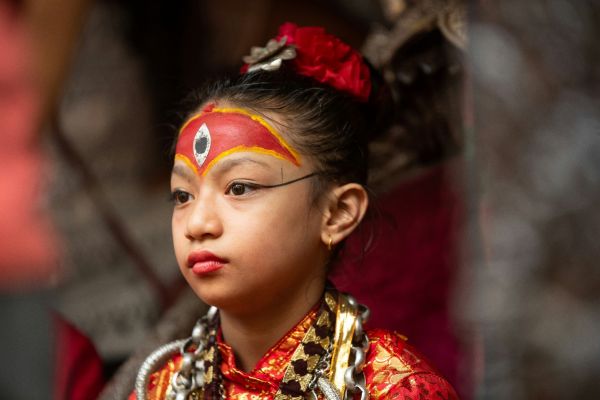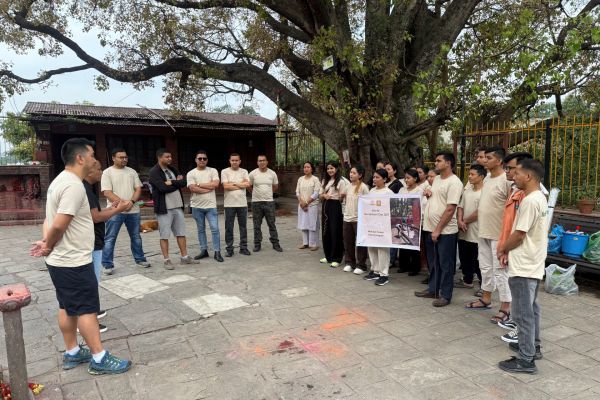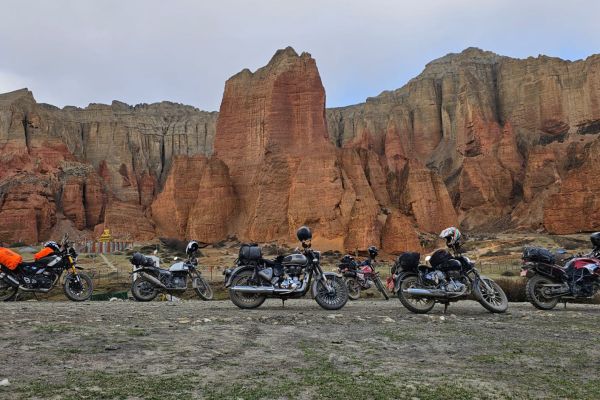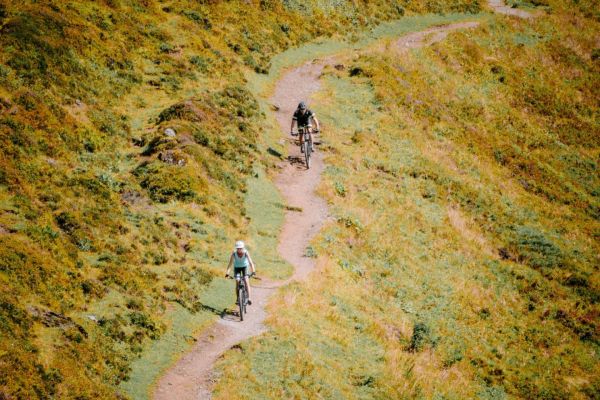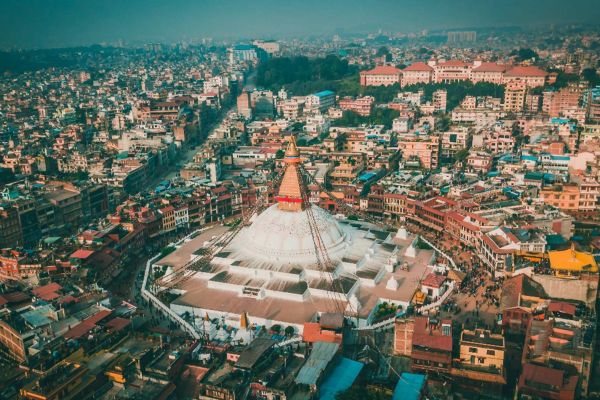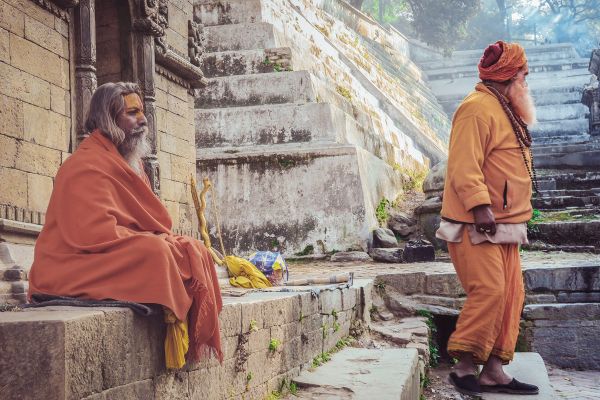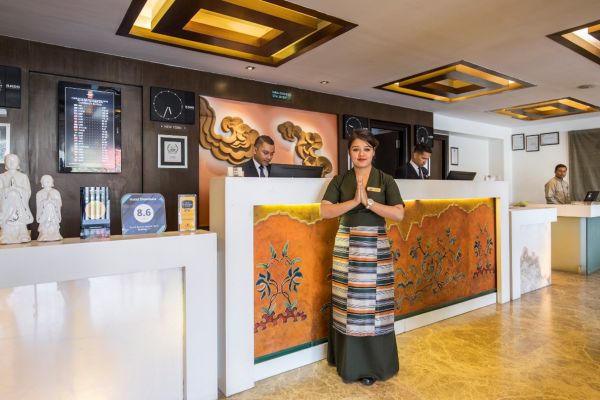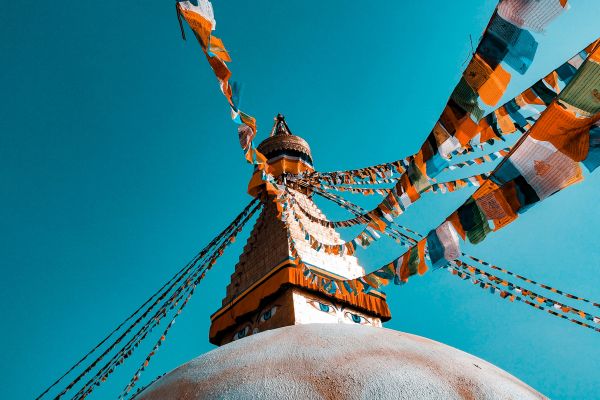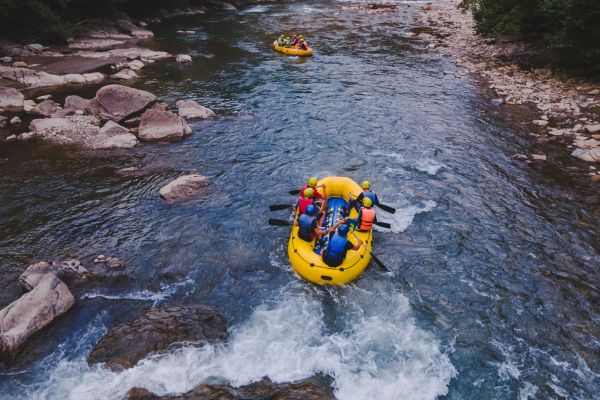A Day Tour at Budhanilknatha Temple: Complete tour Guide
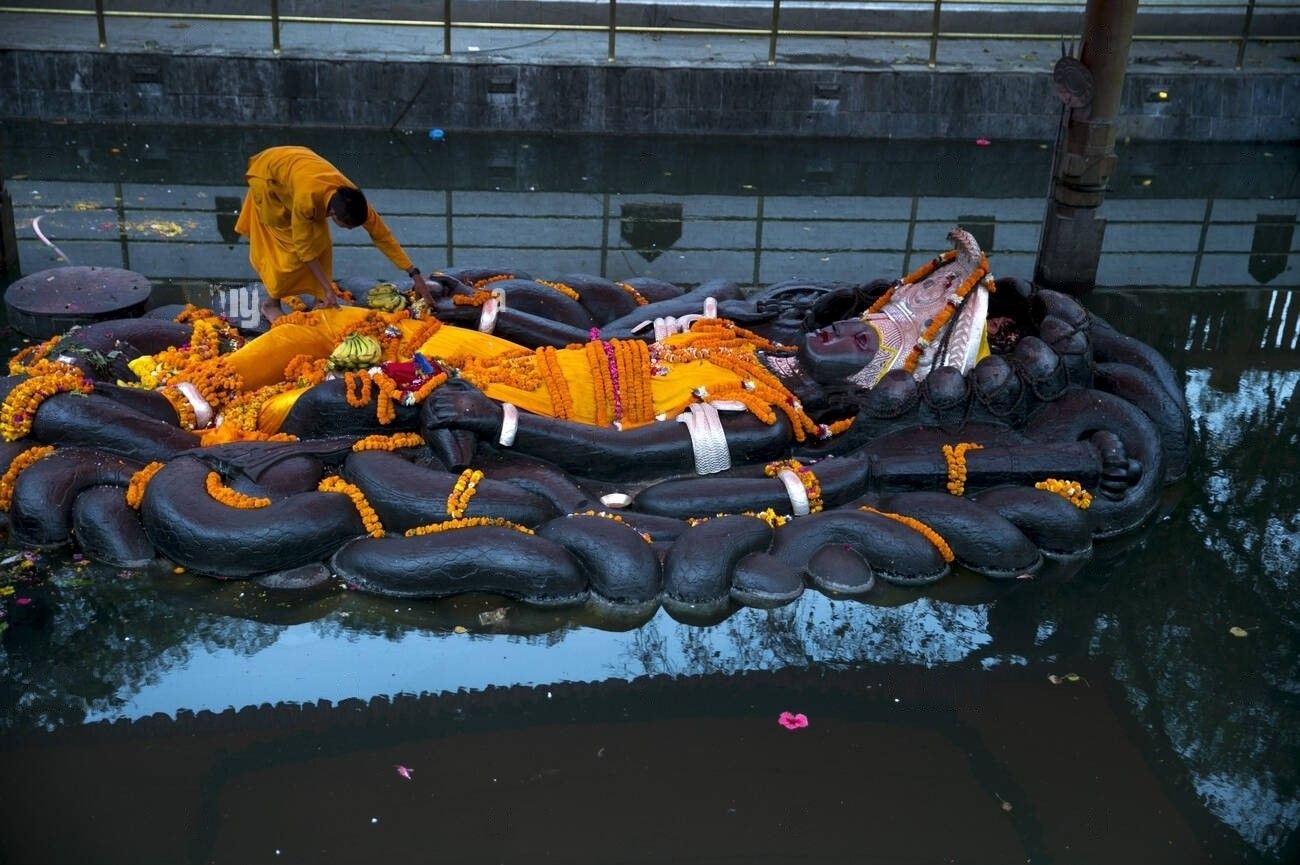
Welcome to Budhanilkantha: A Sacred Haven Near Kathmandu
Located 8 km north of Kathmandu away from the hustle and bustle of the hectic city life, Budhanilkantha is a serene place with spiritual and historical significance. It is located at the base of Shivapuri hill, a popular path that provides weather-dependent views of the Himalayas. Famous for its temple, Budhanilkantha is home to a large reclining stone monument of Vishnu in the middle. The Budhanilkantha temple is also starting point for anyone going on a hike to Jamchen Vijaya stupa which lies 3 Km away from the temple.
Overview of Budhanilkantha Temple
The Budhanilkantha Temple also known as Jal Narayan Temple is a holy shrine for Hindus as well as Buddhists of Kathmandu valley. It is believed that the name “Budhanilkantha” is the combined name that comes from the ancient Nepali language where “Budha” means old “Nil” means blue and “Kantha” means throat.
The Budhanilkantha temple is dedicated to Hindu god,Vishnu. There is a statue of lord Vishnu of about 3m height in a sleeping position on a bed of snakes in the middle of a pond.The sleeping statue of Vishnu is made up from a single block of black basalt rock. The statue of Lord Vishnu has four arms holding Sudarshana Chakra (discus) in upper right hand, Panchajanya Shanka (conch) in upper left hand, Kaumodaki Gada (mace) in lower right hand and Padma (lotus flower) in lower left hand.
Unlike other temples in Kathmandu valley which are placed under a pagoda style roof or stupas, Budhanilkantha is an open roof without a temple building.
As you enter the gate of the temple you will be welcomed by the tune of bhajans that are sung by a group of worshippers from far afar mixed with the ringing bells of the temple. The smell of incense sticks, burnt battis (cotton wicks made to light up in diyas), and aroma of the flowers offered to the god fills up the temple surroundings.
The temple courtyard has small statues that represent different gods of Hinduism. Right at the middle of the temple surrounding is a rectangular pool bordered by railings on all sides. There lies the statue of Lord Vishnu at the center of the pond. In order to go inside the pond you have to take off your shoes at a far corner and stay in the queue to worship lord Vishnu.
The significant part of the temple is the sacred pond that surrounds the lord Vishnu statue. The water in the pond is believed to come from Gosainkunda lake. The pond is the symbol of spiritual purification and devotees are seen walking around the pond as a part of religious rite. During special occasions, pilgrims and devotees are seen taking a dip in the pond to wash away the sins and impurities.
Basic Information of Budhanilkantha Temple
(source: https://www.holidaystonepal.in/budhanilkantha-temple)
Location: Budhanilkantha
Affiliated Religion: Hinduism and Buddhism
Deity: Lord Vishnu and Lord Buddha
Major Attraction: The sleeping statue of Lord Vishnu
Major Celebrations: Harishayani Ekadashi, Haribondhini Ekadashi Mela,Ram Navami
Opening Hours: 04:00 AM – 07:30 PM
Entry Fee: No entry fee
History & Myth of Budhanilkantha
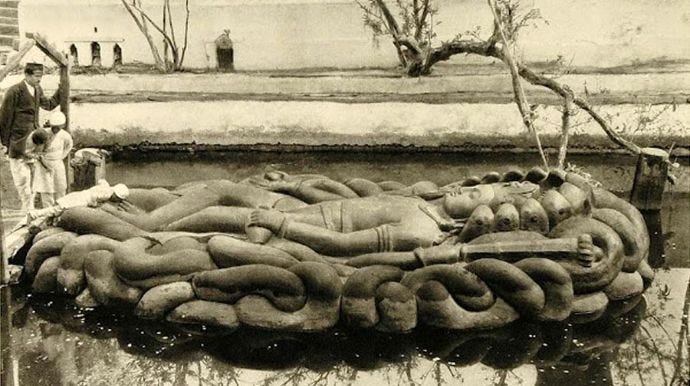
The history of Budhanilkantha dates back to the 5th century when Nepal was reigned by the Licchavi dynasty, one of the first dynasties who ruled Nepal. It is believed that the temple was sculpted in the 7th century and transported to the present location by Vishnu Gupta who was serving under Licchavi King Bhimarjuna Dev.
According to the ancient Hindu myths, a farmer and his wife discovered the statue while plowing the field. While plowing the field they found stone to be bleeding and discovered it to be the missing statue of Budhanilkantha.
It is believed that no Kings of Nepal had ever visited the Budhanilkantha temple besides King Pratap Malla. It is said that if any kings of Nepal visited the temple, they would die.
The floating nature of the sculpture has triggered the attempt to investigate the composition of materials that it is made up of. However, as it is a religious area investigation is not allowed. But some tests doubt that the statue is made of silica which helps it to float on water.
The Budhanilkantha Temple’s history is intertwined with Nepal’s complex socio-religious architecture. The meticulous craftsmanship of the Licchavi era is evident in its architectural and artistic details. The temple’s serene location beside a pond adds to its attractiveness, making it a great place for spiritual reflection. Over the years, the temple has undergone renovations and restorations, but its historical and spiritual value has not changed.
Cultural and Religious Essence of Budhanilkantha
The Budhanilkantha temple is also called the temple of “Sleeping Vishnu” or “Narayanthan Temple”. The temple has both religious and cultural significance that ties the faith and tradition of Nepal’s spiritual tapestry.
The temple is a marvel of Licchavi dynasty architecture, filled with complex patterns and design aspects that reflect the artistic history of the country. These architectural elements are not just beautiful; they also serve as a powerful symbol of the skill and craftsmanship of traditional Nepali craftsmen, creating a deep sense of cultural pride in the people of Nepal.
The iconic statue of reclining lord Vishnu portrays harmony and safeguarding of the universe attracting devotees from all around the globe. The pond encircling the statue reflects the purity and spiritual reflection. As a part of spiritual significance in Hinduism, it is believed that offering prayers at this temple can fulfill wish and cleanse sin.
The temple also hosts a number of Hindu festivals making it significant to the cultural and religious celebrations. The temple of Budhanilkantha in Nepal represents the fusion of faith and culture while the religious holiness reflects the devotion of the people. The Budhanilkantha temple has a gurukul where students are taught Sanskrit and other lessons of Hinduism. The students are also taught different vedas and rituals. The students of the gurukul perform the daily aarati at the temple in morning and evening.
Major Celebrations at Budhanilkantha Temple
There are several Hindu festivities celebrated at Budhanilkantha throughout the year attracting devotees from the whole country. Some of the major festivals are:
Harishayani Ekadashi
Harishayani Ekadashi, also called Devshayani Ekadashi is one of the major festivals celebrated in Budhanilkantha temple. It falls in the month of Ashadh (June or July). According to the Vedic Sanatan Hindu calendar ‘Panchang’, the time it takes for a full moon to appear as a new moon is split into fifteen equal periods, and each moving time portion of the moon is referred to as a day or lunar date. Ekadashi is the eleventh day of the month that is determined by the moon’s position.
The title “Harishayani” refers to the “Sleeping Lord Vishnu”. The day is celebrated as a symbolism of Lord Vishnu entering the state of cosmic rest of four months to escape the summer. Devotees gather around the temple to offer prayer and seek blessings. Some devotees also fast on this day as a part of worship.
Different kinds of rituals are performed at the temple on this day which forms a strong spiritual and cultural connection between devotees and god.
Haribodhani Ekadashi
Haribodhani Ekadashi is another festival that is celebrated at Budhanilkanth temple. This Ekadashi falls in the month of Kartik (October to November). This festival symbolizes the end of Lord Vishnu’s cosmic rest. During the Haribodhini Ekadashi festival, devotees gather at the temple site to celebrate Lord Vishnu’s waking from his cosmic rest. The festival’s major attraction is the detailed and ceremonial procession of Lord Vishnu.
The priest of the temple performs various rituals and traditions in the presence of devotees and worshippers. Devotees make offerings, fast, seek blessings and participate in the festivities to express gratitude to Lord Vishnu. The Budhanilkantha Temple comes to life with devotion and cultural festivities during Haribodhini Ekadashi, providing an exceptional insight into Nepal’s rich religious traditions.
How to reach Budhanilkantha Temple?
Since the temple is located approximately 8 KM north of Kathmandu, you can either hire a taxi or local bus from various bus stops in Kathmandu. The bus will take you to the bus station near Budhanilkantha temple.
How to reach Budhanilkantha temple from Hotel Shambala?
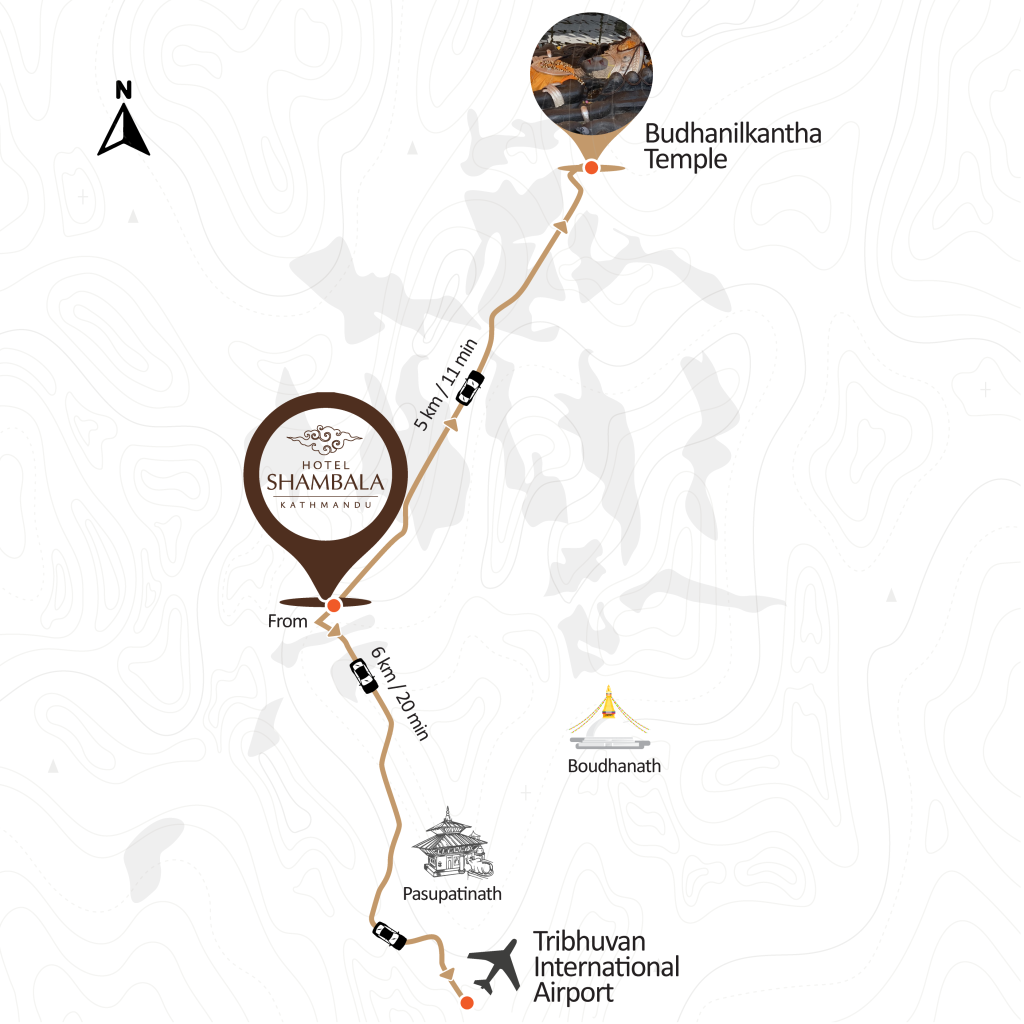
The Budhanilkantha temple is 4 Km away from Hotel Shambala. A 15-min drive from a hired cab or private car will take you to the temple. You can also take a local bus from the bus stop at Narayan Gopal Chowk (nearby Hotel Shambala) to reach the temple.
Best place to stay near Budhanilkantha temple
After a day of exploring the Budhanilkantha temple, Hotel Shambala is the best nearby boutique hotel to relax while sipping a cool summer drink and a lavish lunch. The convenient and comfortable place just 4 Km away from the temple is Hotel Shambala. If you like to explore Kathmandu more and like to spend a few days here then, we have one of the best accommodations in Kathmandu as well.
